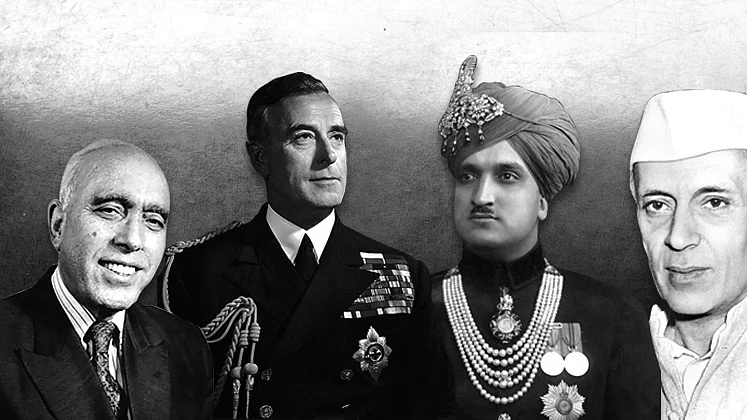History lessons for Amit Shah on Kashmir that he should have studied in school
Amit Shah must know that former Prime Minister Jawaharlal Nehru is the reason why two-third of Jammu and Kashmir is a part of India today

Seventy-two years after the state of Jammu & Kashmir acceded to India, questions are still being asked why India accepted a ceasefire and why its Army was not allowed to evict Pakistani raiders from the other side of LoC, which since has become the Pakistan Occupied Kashmir (PoK) and Gilgit-Baltistan.
The latest to raise the question is Union Home Minister Amit Shah who on the floor of the House attributed the J&K problem to India’s first Prime Minister Jawaharlal Nehru. Unfortunately, the Union Home Minister, a product of RSS, appears to be aware of only a distorted version of history that the Sangh propagates.
This brief article attempts to trace the origin of the dispute and answer the RSS/BJP propaganda on the issue. But before doing so, it is important to know that both the Indian and Pakistan armies during the period were headed by British generals.
While Muhammad Ali Jinnah, as Governor-General of Pakistan, was the supreme authority for Pakistan, Lord Mountbatten, as the Governor-General of India, was the Chief of India’s Defence Committee comprising Prime Minister Jawaharlal Nehru, Union Home Minister Sardar Patel and Defence Minister Baldev Singh. All decisions on J&K — accession, sending troops, reference to UN, ceasefire etc were taken by the Defence Committee.
As for other princely states, it was open to the ruler of Jammu and Kashmir — a state which was contiguous to both India and Pakistan, to sign the Instrument of Accession and join it to either dominion. Maharaja Hari Singh, the ruler of Jammu and Kashmir, delayed his decision as it was for him not an easy decision to take: his state was contiguous to both India and Pakistan and, while he was a Hindu, his subjects were predominantly Muslim.
The ruler’s offer was conveyed in identical terms to both the dominions on August 12, 1947. Tribal raiders covertly led by Pakistani Army officers started crossing the frontiers of the state in the third week of October. The armed forces of the state were mobilised to offer resistance but by October 25 the invaders had advanced deep into Kashmir and were within a few miles of Srinagar.
The state people’s movement in Jammu and Kashmir had been led by Sheikh Abdullah, an outstanding leader. A strong bond of co-operation had been forged between the Indian National Congress and the Kashmir National Conference. Nehru and Sheikh Abdullah had formed a firm friendship which was to prove of great advantage for India.
With Mountbatten’s advice, and under pressure from Nehru and Patel, the Maharaja offered to accede to India and asked for immediate military assistance. VP Menon, secretary, ministry of states, flew to Jammu and got the instrument of succession signed by the Maharaja on October 26.
The emergency meeting of the Defence Committee comprising Nehru, Patel and Baldev Singh, despite initial resistance from Lord Mountbatten ordered troops in the Valley to evict the invaders. Operation J&K commenced at first light on the morning of October 27.
One after another, more than a hundred planes flew out of Safdarjung Airport, ferrying weapons, rations and troops of the Sikh Regiment led by Lt. Col. Ranjit Rai who was one of the first soldiers to sacrifice his life, but not before his unit had succeeded in establishing a bridge head on the BaramulaSrinagar road which halted the invasion and saved Srinagar. The war in J&K went on for 15 months. On
January 1, 1948, India took the issue of J&K to the(UNSC). In April 1948, the UNSC passed a resolution calling for Pakistan to withdraw from all of Jammu and Kashmir and India to reduce its forces to the minimum level, following which a plebiscite would be held to ascertain the people’s wishes. By the end of November 1948, Indian forces had recaptured Dras and Kargil, securing the route from the Valley to Ladakh. Simultaneously they took Mendhar and linked up with the Poonch Garrison, so lifting the year-long siege.
Having fully secured Ladakh and Rajouri Poonch, India accepted ceasefire for which international pressure had been building up and could not be resisted any longer. The guns fell silent on the last night of 1948 and ceasefire became effective from January 1, 1949. India agreed to a plebiscite subject to certain specific conditions, the most important of which was that Pakistan should withdraw all troops and vacate the entire territory of the former princely state of Jammu & Kashmir.
This Pakistan refused to and still refuses to do so. According to the late diplomat and former foreign secretary JN Dixit: “An even more interesting factor, which is not widely known, is that Sheikh Abdullah himself was not very keen that Indian forces retrieve the western areas of the state from Pakistani troops. The reason was that he was not sure of his popularity with the people who inhabited PoK. His leadership did not have the same support in those areas which they had in the rest of Jammu and Kashmir. Sheikh Abdullah therefore endorsed India referring the case to the UNSC.”
It therefore emerges that but for Jawaharlal Nehru and Sheikh Abdullah, Kashmir wouldn’t have been part of India. Amit Shah and the Sangh Parivar need to know that we did not lose a third of Kashmir because of Nehru’s policy. Two third of the state is with India due to the quick military intervention of Jawaharlal Nehru and the support of the people of J&K led by Sheikh Abdullah.
(The author, an ex-Army officer, is member, National Commission for Minorities. Views expressed by him are personal)
Follow us on: Facebook, Twitter, Google News, Instagram
Join our official telegram channel (@nationalherald) and stay updated with the latest headlines
